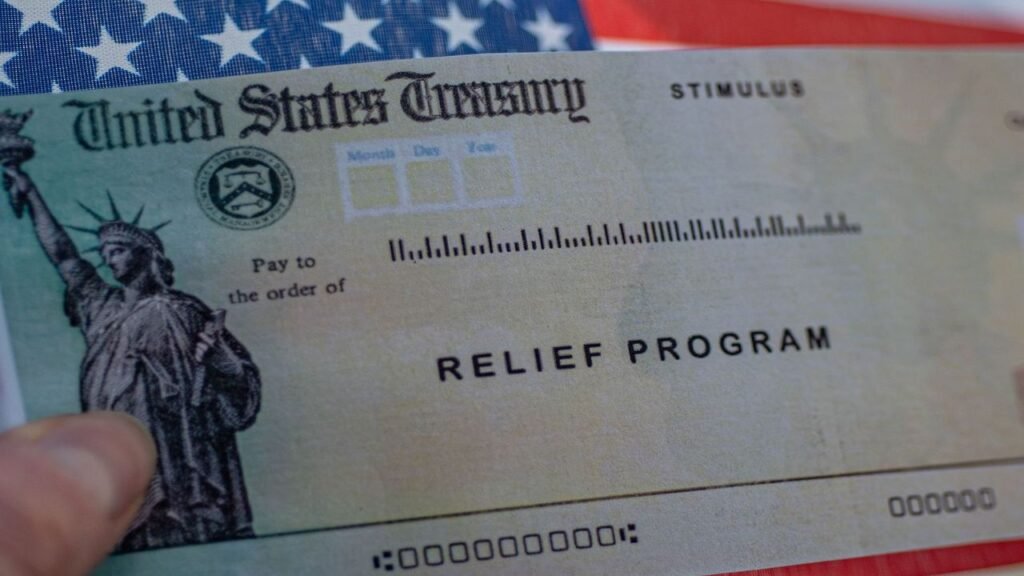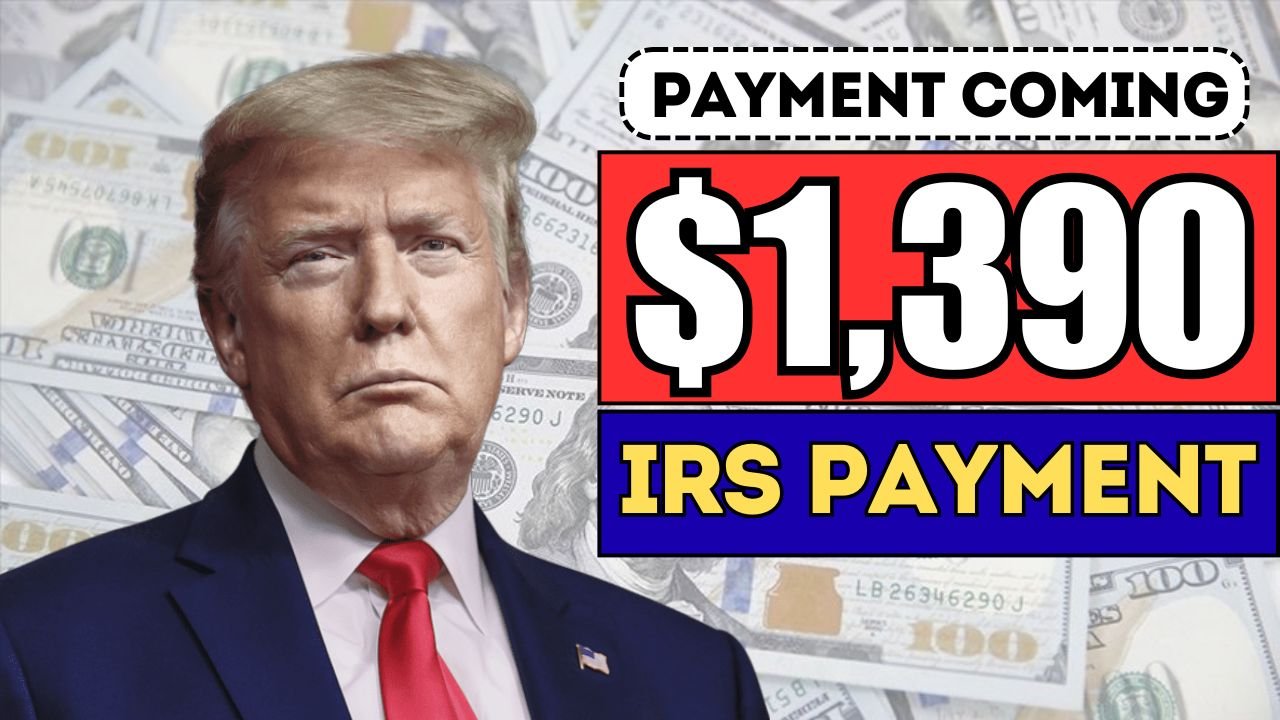Social media is once again flooded with claims about a new “$1,390 IRS payment” supposedly arriving in November 2025 – with some calling it a “fourth stimulus check.” Posts across Facebook, TikTok, and YouTube suggest that Americans will soon see automatic deposits from a so-called “Federal Inflation Adjustment Program.”
However, according to official sources, no such payment exists. The IRS and U.S. Treasury have publicly confirmed that no new federal stimulus or relief payments are planned for 2025 or 2026.
- No $1,390 payment approved – the IRS and Treasury confirmed this rumor is false.
- Scammers are exploiting the claim through fake messages and phishing links.
- Real government programs like the EITC, CTC, and state rebates are still active – but unrelated to this hoax.
Fact Check: No $1,390 IRS Payment Exists
According to statements from both the Internal Revenue Service (IRS) and the U.S. Department of the Treasury, there are no new federal relief deposits or stimulus programs scheduled for 2025.
“There are no new federal stimulus payments planned for 2025,” – IRS Newsroom, Official Statement
All authorized Economic Impact Payments from the COVID-19 era were distributed between 2020 and 2021, and any late claims through the Recovery Rebate Credit have already expired.
In short: if you see posts promising $1,390 checks, they’re false. No Congressional bill, IRS update, or Treasury announcement supports these claims.
How the $1,390 Rumor Started

The viral claim appears to mix outdated information with legitimate government updates, creating confusion. Three separate developments likely fueled the misinformation:
- Tax Adjustments for 2025:
The IRS recently announced updates to income tax brackets, standard deductions, and the Earned Income Tax Credit (EITC). These legitimate tax changes could mean higher refunds next year, but they are not new payments. - State-Level Rebates:
Several states, including Alaska, Minnesota, and New Mexico, issued cost-of-living rebates or energy relief checks in 2025. Many social media accounts falsely described these as federal payouts. - Social Security COLA Updates:
The Social Security Administration (SSA) announced the 2026 cost-of-living adjustment (COLA) increase, which added to the false belief that new money was coming to everyone.
Old screenshots, local news clips, and outdated graphics were recycled to create a believable — but fake – “IRS payment” story.
What the IRS and FTC Actually Said
When questioned, an IRS spokesperson reiterated:
“The IRS is not distributing new Economic Impact Payments in 2025. Any emails, messages, or posts suggesting otherwise should be treated as scams.”
The Federal Trade Commission (FTC) also issued an alert warning Americans about phishing scams using this false claim. Criminals are sending emails and texts asking for bank account verification or login details, pretending to “release” the supposed payment.
If you receive such messages:
- Do not click any links or share personal data.
- Report phishing attempts at reportfraud.ftc.gov.
Breaking Down the Hoax
Here’s how the viral claims compare to reality:
| Viral Claim | Reality Check |
|---|---|
| “$1,390 IRS payment arriving between Nov 8–30, 2025.” | False. No such program or payment exists. |
| “Federal Inflation Adjustment Initiative.” | No record of this name in Congress.gov or Federal Register. |
| “Track your payment through the IRS portal.” | The “Get My Payment” tool was retired after the 2021 stimulus checks. |
| “Automatic deposits based on 2024 taxes.” | No legislation or authorization for such a payout. |
(Cross-verified through IRS.gov, Treasury.gov, and Congress.gov.)
Real Programs That Still Exist

While the $1,390 payment is fake, several legitimate financial aid programs remain available for qualifying Americans:
| Program | Eligibility | Where to Check |
|---|---|---|
| State Rebate Programs | Varies by state (e.g., inflation relief, energy credits) | State revenue websites |
| Earned Income Tax Credit (EITC) | Low- to moderate-income workers | IRS EITC Page |
| Child Tax Credit (CTC) | Families with dependents under 17 | IRS CTC Information |
| SNAP / LIHEAP | Food and energy assistance for low-income households | Local agencies |
| Social Security COLA 2026 | Retirees, SSDI, and SSI recipients | SSA.gov |
These are verified, active programs – unlike the fabricated “$1,390 stimulus.”
How to Spot and Avoid Payment Scams
Scammers thrive on trending topics like “new checks” or “stimulus updates.” Protect yourself with these guidelines:
- The IRS never asks for banking info via text, call, or email.
- Always verify claims through IRS.gov or Treasury.gov – not social media.
- Ignore websites offering “payment calculators” for new relief programs – they often steal data.
- Don’t share or forward unverified posts; it fuels misinformation.
Bottom Line
Despite what viral videos and online posts claim, there is no $1,390 IRS payment scheduled for November 2025. Neither the IRS nor Congress has authorized any new round of stimulus or relief checks.
If such a program were real, it would appear in federal budget records, undergo Congressional debate, and be announced directly through official government channels – not YouTube, TikTok, or Facebook reels.
Until then, stay vigilant, fact-check before sharing, and rely on trusted sources for financial updates.
FAQs
Q1. Is the $1,390 IRS payment real?
A. No. Both the IRS and Treasury have confirmed that this payment does not exist.
Q2. Why are people talking about it online?
A. Social media posts recycled old stimulus details and mixed them with legitimate state rebates and COLA updates.
Q3. Could the government send a new stimulus payment in the future?
A. Possibly – but it would require Congressional approval and an official announcement through IRS.gov and Treasury.gov.
Q4. What should I do if I receive a text or email about it?
A. Delete it immediately and report it to reportfraud.ftc.gov.
Q5. Are there real payments I can apply for?
A. Yes – programs like the EITC, CTC, state rebates, and Social Security COLA increases are legitimate.



